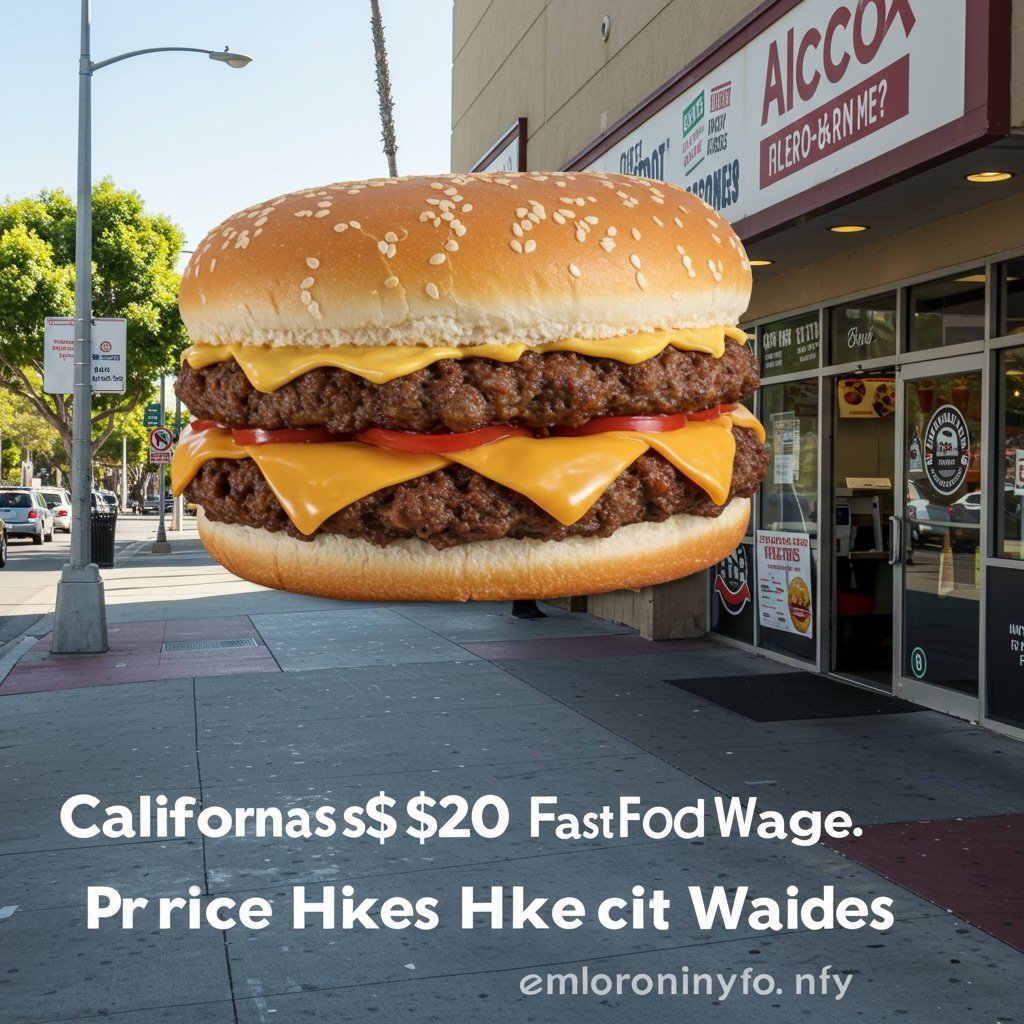California’s Fast Food Sector Navigates New Wage Landscape
California’s quick-service restaurant industry, a cornerstone of the state’s economy and daily life for millions, is currently undergoing significant adjustments following the implementation of a landmark minimum wage law. Assembly Bill 1228, which took effect on April 1, 2024, mandated a $20 per hour minimum wage for most fast food workers across the state. This legislative change, aimed at improving the economic standing of a large segment of the workforce, has predictably initiated a chain reaction, impacting not only the balance sheets of businesses but also the wallets of consumers and the operational strategies of restaurants.
Consumer Impact: Higher Prices at the Counter
The most immediate and visible consequence of the new wage law has been felt directly by consumers. Since April 1st, customers visiting their favorite fast food establishments have encountered noticeable increases in menu prices. Reports and anecdotal evidence suggest that many chains have already raised prices, with some increases reportedly ranging from 5% to as much as 15% on certain items or overall menu costs. This translates into a higher cost for convenience and a potential reduction in affordability, particularly for low-to-middle-income families who rely on fast food for quick, budget-friendly meals. The economics are straightforward: a substantial increase in the largest variable cost for many restaurants – labor – necessitates adjustments to pricing to maintain profitability or simply cover the elevated expenses. For consumers already grappling with broader inflationary pressures, these added costs at the fast food drive-thru or counter represent another strain on household budgets.
Industry Response: Navigating Increased Labor Costs
Restaurant operators, particularly franchisees who operate individual or multiple locations under major national brand umbrellas, are at the forefront of implementing changes to absorb or offset the mandated wage increase. These businesses operate on relatively thin margins, and a sudden, significant jump in labor costs presents a formidable challenge. Their responses are varied but generally fall into several key strategies aimed at improving efficiency and reducing overall expenses.
One common strategy involves workforce adjustments. While specific numbers are difficult to track broadly, many operators are reportedly implementing workforce reductions. This could mean fewer employees on shift at any given time, slowing service speed slightly, or reducing staff through attrition rather than direct layoffs. Another related measure is limiting operating hours, especially during periods that are less busy but still require staffing. By closing earlier or opening later, operators can reduce total labor hours while attempting to minimize the impact on peak revenue periods.
A more long-term and potentially transformative response is the acceleration of investments in automation technologies. This includes everything from self-ordering kiosks, which reduce the need for counter staff, to automated beverage dispensers, fryers, or even robotic kitchen assistants for repetitive tasks. While automation has been a growing trend in the industry for years, the substantial labor cost increase provides a powerful new incentive to speed up adoption. The goal is to perform more tasks with fewer human hands, thereby offsetting the higher per-hour cost of the remaining workforce. However, integrating these technologies requires significant upfront capital investment, which can be particularly challenging for smaller, independent franchisees.
Market Outlook: Challenges Ahead
Industry analysts are closely monitoring the situation, and their predictions suggest ongoing challenges for certain segments of the market. Smaller operators, who may lack the capital reserves of larger multi-unit franchisees or corporate-owned stores, are expected to face particular difficulty navigating the increased cost structure. Their ability to absorb higher expenses or invest in efficiency-boosting technology is often more limited. This could lead to increased financial pressure and, potentially, business closures.
The competitive landscape in major metropolitan areas like Los Angeles and the Bay Area, where the fast food market is saturated and competitive pressures are high, is anticipated to be particularly challenging. In these densely populated areas, restaurants are often located in close proximity, and small differences in pricing or operational efficiency can significantly impact foot traffic and profitability. Analysts predict that the ripple effects of AB 1228, including potential closures of less resilient establishments, could continue to manifest throughout 2025.
Regulatory Oversight and Future Considerations
The state’s Fast Food Council, established as part of the legislative framework surrounding the wage law, is tasked with monitoring the impact of the $20 minimum wage. The council is responsible for studying wages, working conditions, and potentially proposing future wage adjustments, although any significant near-term changes to the current $20 rate appear unlikely based on initial reports and the current phase of impact analysis. The ongoing data collection and assessment by the council will be crucial in understanding the full scope of the law’s effects on workers, businesses, and the broader California economy in the months and years to come. The balancing act between ensuring fair wages for workers and maintaining a viable, accessible fast food industry for consumers and operators remains a key focus as the state adapts to this new economic reality.


















